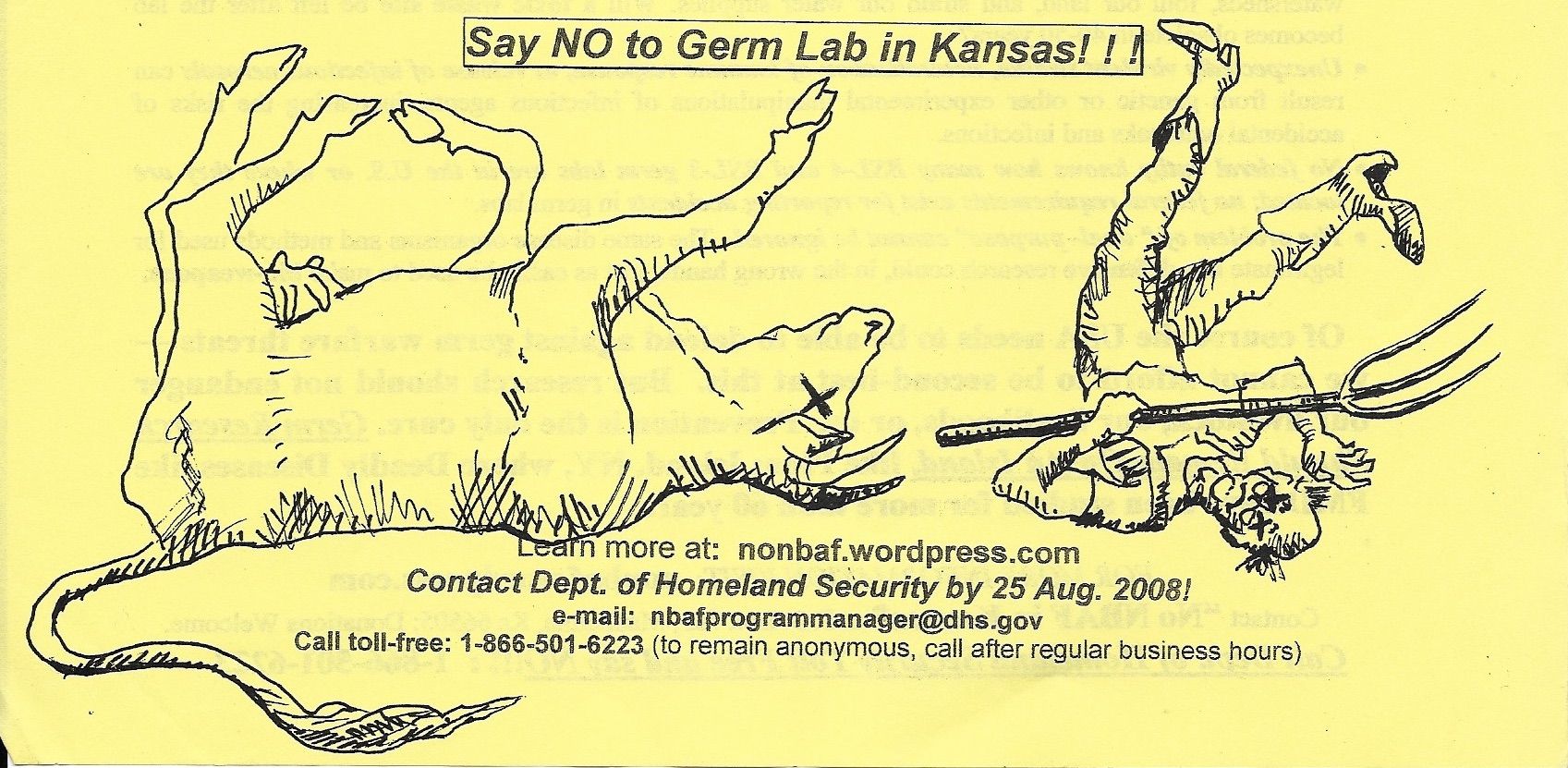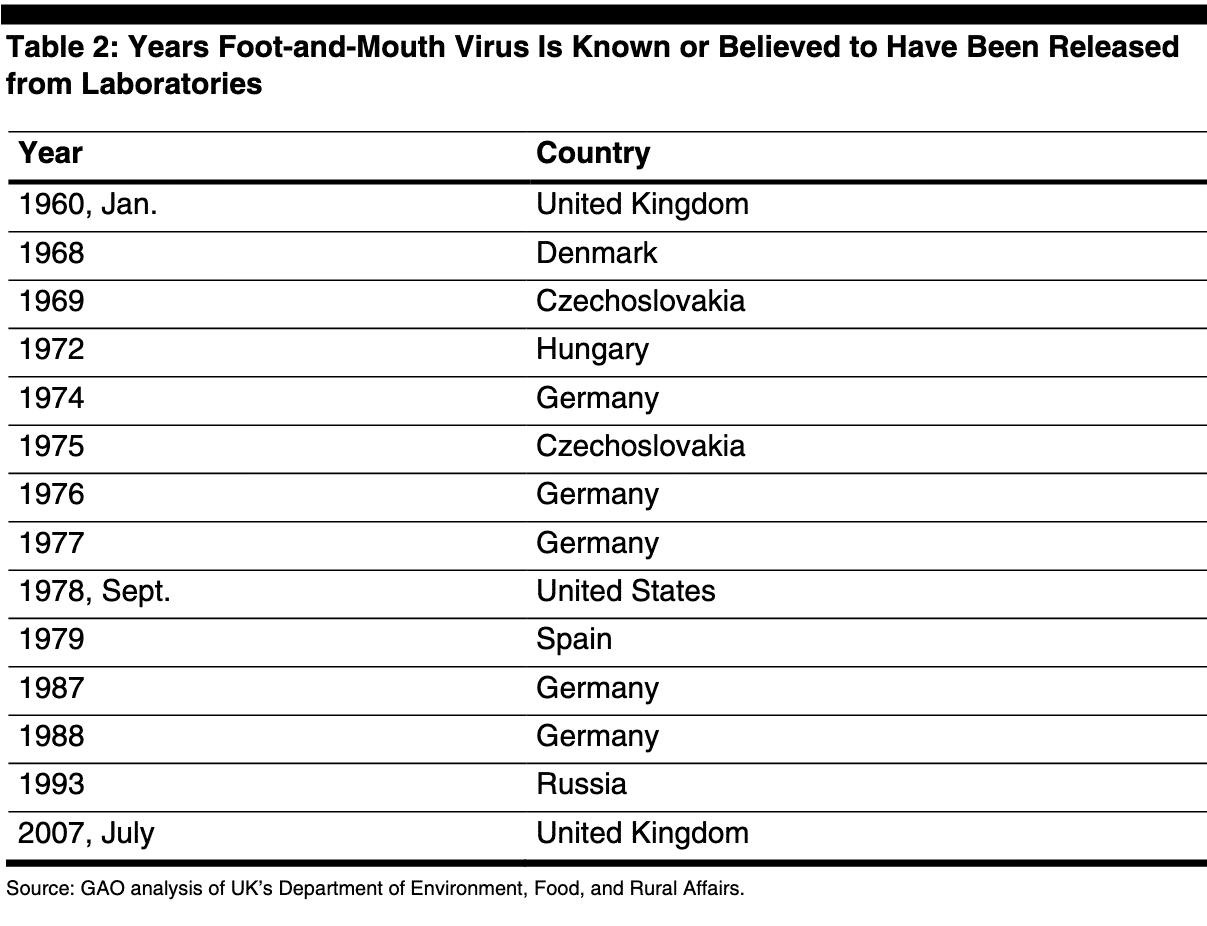Hot zone in the heartland?
Photo of Flint Hills by Patrick Emerson (CC-ND)
As the United States struggles with the coronavirus pandemic, a years-long debate over the new National Bio and Agro-Defense Facility—to be located smack in the middle of Kansas cattle country—raises worrying questions about the safety of American biodefense labs.
This article was produced in a partnership between The New Yorker and the Bulletin of the Atomic Scientists.
On weekday mornings, Kimberly Dodd, a virologist and veterinarian, drives to a marina in Old Saybrook, Connecticut. She parks alongside her colleagues’ cars and, flashing her badge at the guards in a plexiglass booth, walks aboard a white passenger ferry. Inside, her co-workers recline in their seats, reading, listening to headphones, or napping. The ride to Plum Island, where they work, takes about thirty minutes.
Plum Island is situated at the mouth of Long Island Sound. Low to the sea and covered with vegetation, it’s a three-mile-long isosceles triangle, its tail pointing eastward. The island is home to more than two hundred species of birds, including kestrels, great horned owls, and little blue herons. The Plum Island Animal Disease Center, where Dodd works, also hosts a rotating cast of around forty or fifty animals—mostly cattle and pigs—that do not leave alive.
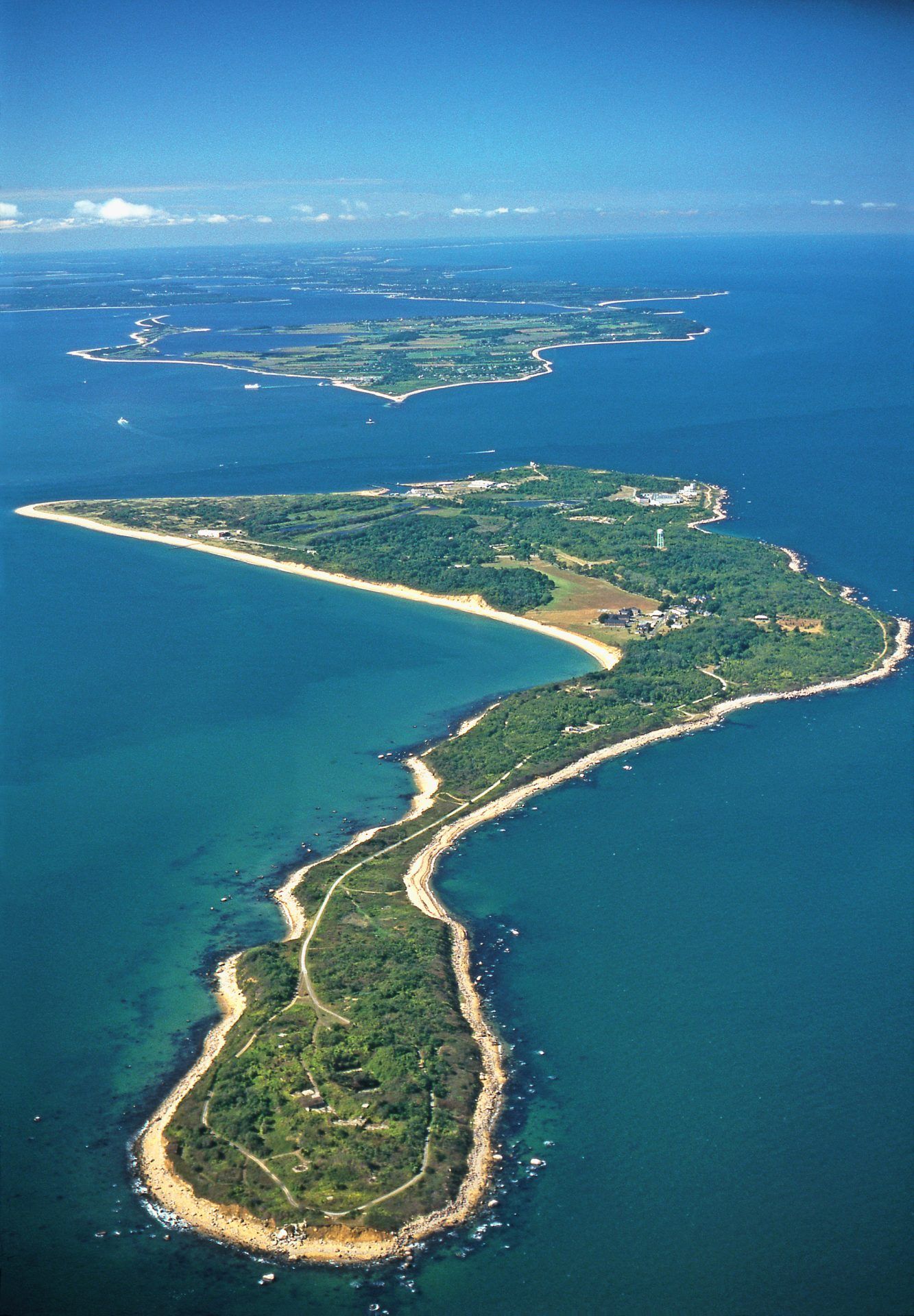
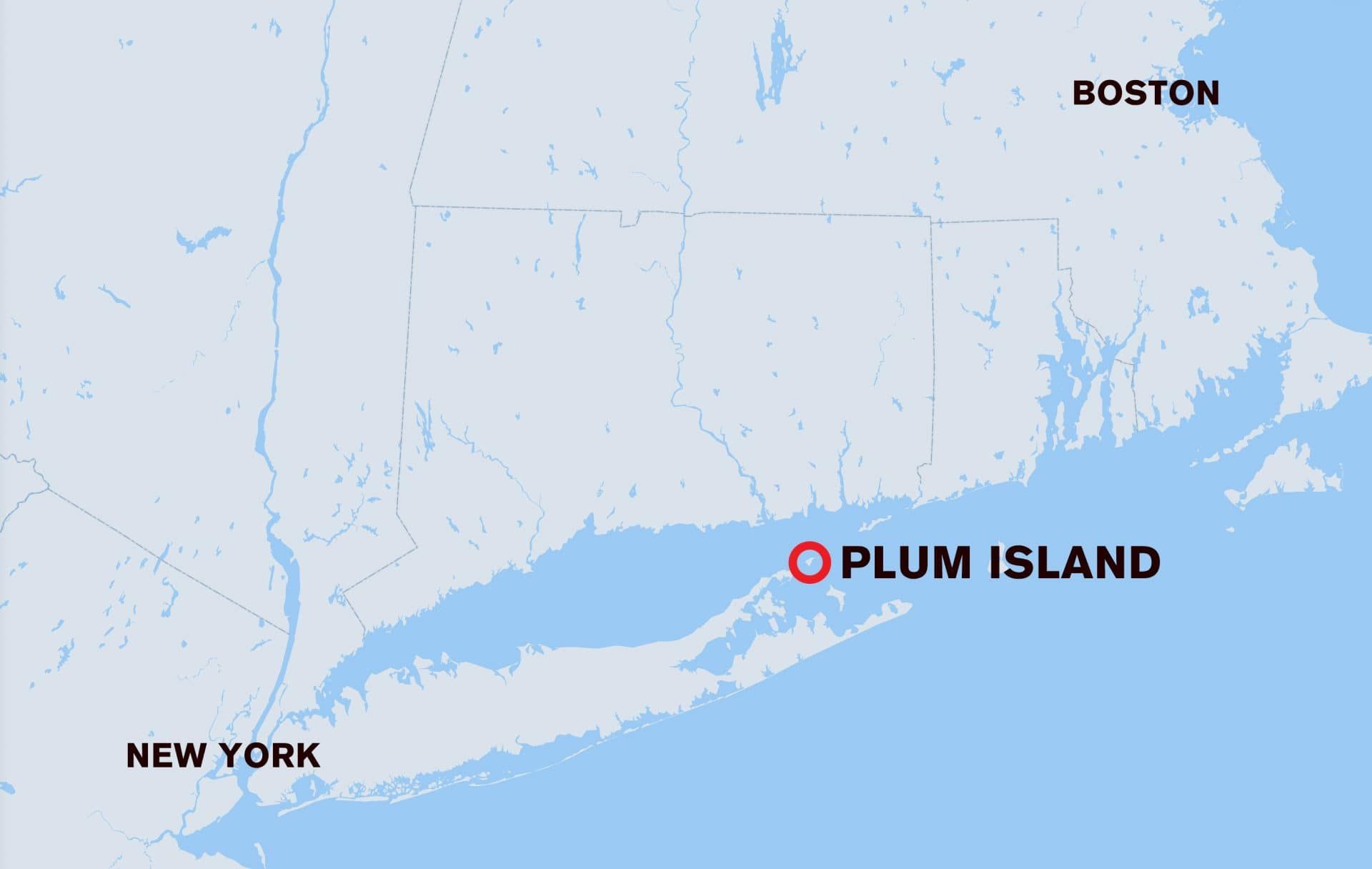
According to guidelines issued by the Centers for Disease Control and Prevention, the Plum Island lab operates at biosafety level three. So-called BSL-3 labs can handle serious or lethal pathogens for which vaccines or treatments may be available, such as anthrax, plague, or the newly emerged coronavirus, which causes the disease covid-19. In the past, Dodd has worked in labs designated BSL-4, the highest level, which can handle airborne pathogens that may be untreatable. In 2014, she travelled to West Africa to combat an outbreak of the Ebola virus. In her current job, as the director of Plum Island’s Foreign Animal Disease Diagnostic Laboratory, she studies diseases that could destroy the livestock industry, such as foot-and-mouth and African swine fever.
After disembarking from the ferry, Dodd boards a shuttle bus, which takes her to an office building attached to a larger white laboratory complex. She visits her office, which has a view of the water, then begins the process of entering the lab. She passes through a floor-to-ceiling security turnstile manned by two guards. She leaves her clothes, shoes, and jewelry in a locker room, then, in a second room, changes into scrubs and cotton socks; she may also, in a third room, put on rubber boots, protective glasses, double gloves, and a full-body suit made of white Tyvek. Before entering the “dirty” rooms, where pathogens or animals are present, she checks an airflow indicator to make sure that air is being pumped in, rather than flowing out. Later, when Dodd leaves the lab, she removes the protective gear and takes a protocol-mandated five-minute shower. She and her colleagues are prohibited from bringing open food containers on the ferry home; if they’ve worked in one of the animal rooms, they must quarantine themselves from livestock for a minimum of five days.
Plum Island’s safety measures and isolated location are meant to prevent the diseases studied there from escaping and infecting American herds. Stopping the spread of foot-and-mouth disease is particularly difficult: it’s capable of travelling on a trouser leg or a mud-splashed tire. After an outbreak in 2001, British farmers were forced to kill some six million sheep, cattle, and pigs, burying their carcasses in mass graves or burning them in pyres. If the disease were found among American cattle, the beef industry, worth about sixty-eight billion dollars annually, would immediately shut down.
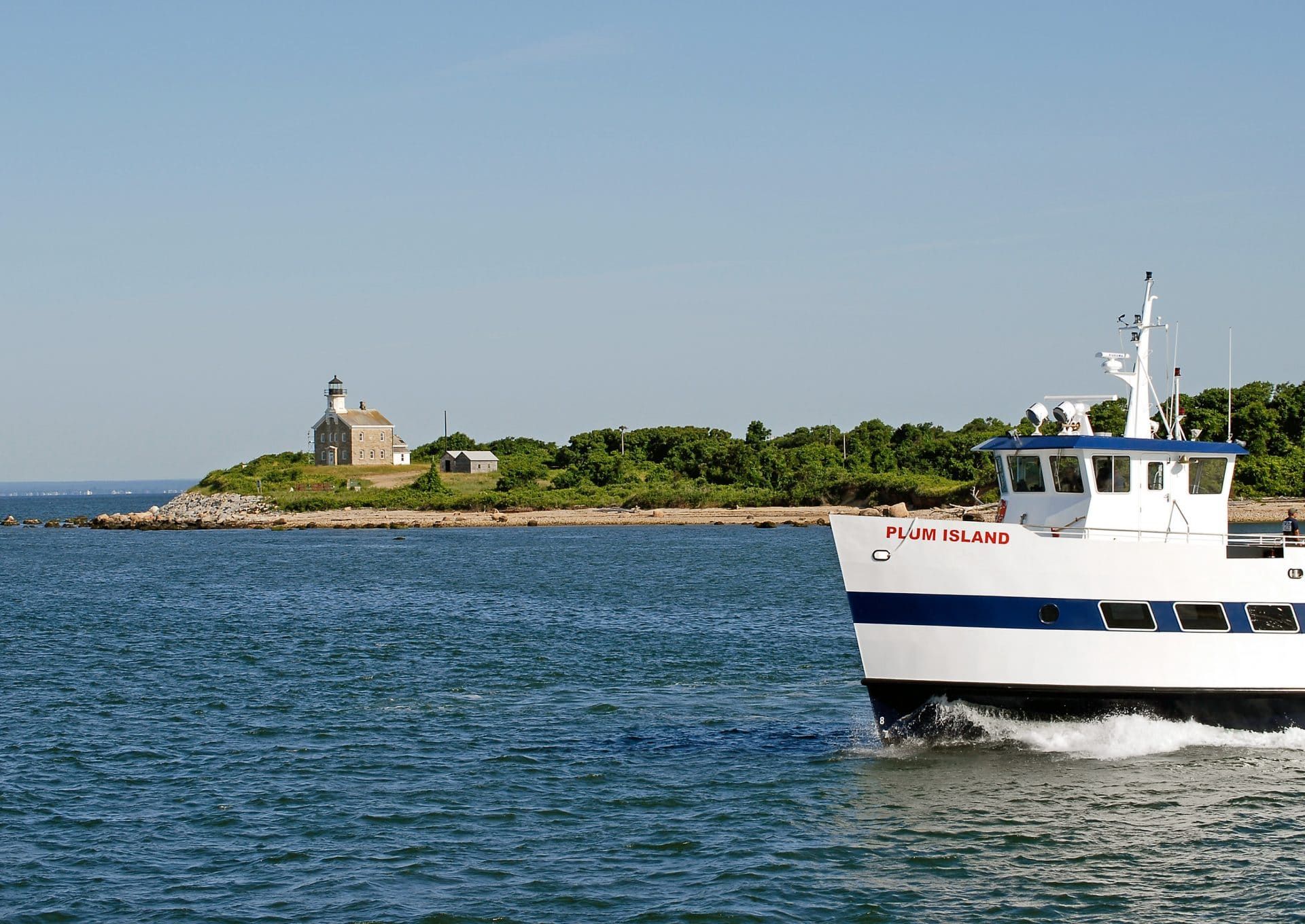
On sunny days, Dodd sometimes spends the trip home on the ferry’s roof deck, watching the birds, the boats, and the island’s receding shore. She won’t have this picturesque commute forever. In the next few years, Dodd and most of the other scientists on Plum Island will relocate to a new facility, which is now under construction. Unlike Plum Island, the National Bio and Agro-Defense Facility (N.B.A.F.) won’t be geographically isolated. It will be located in Manhattan, Kansas, a college town in the middle of cattle country.
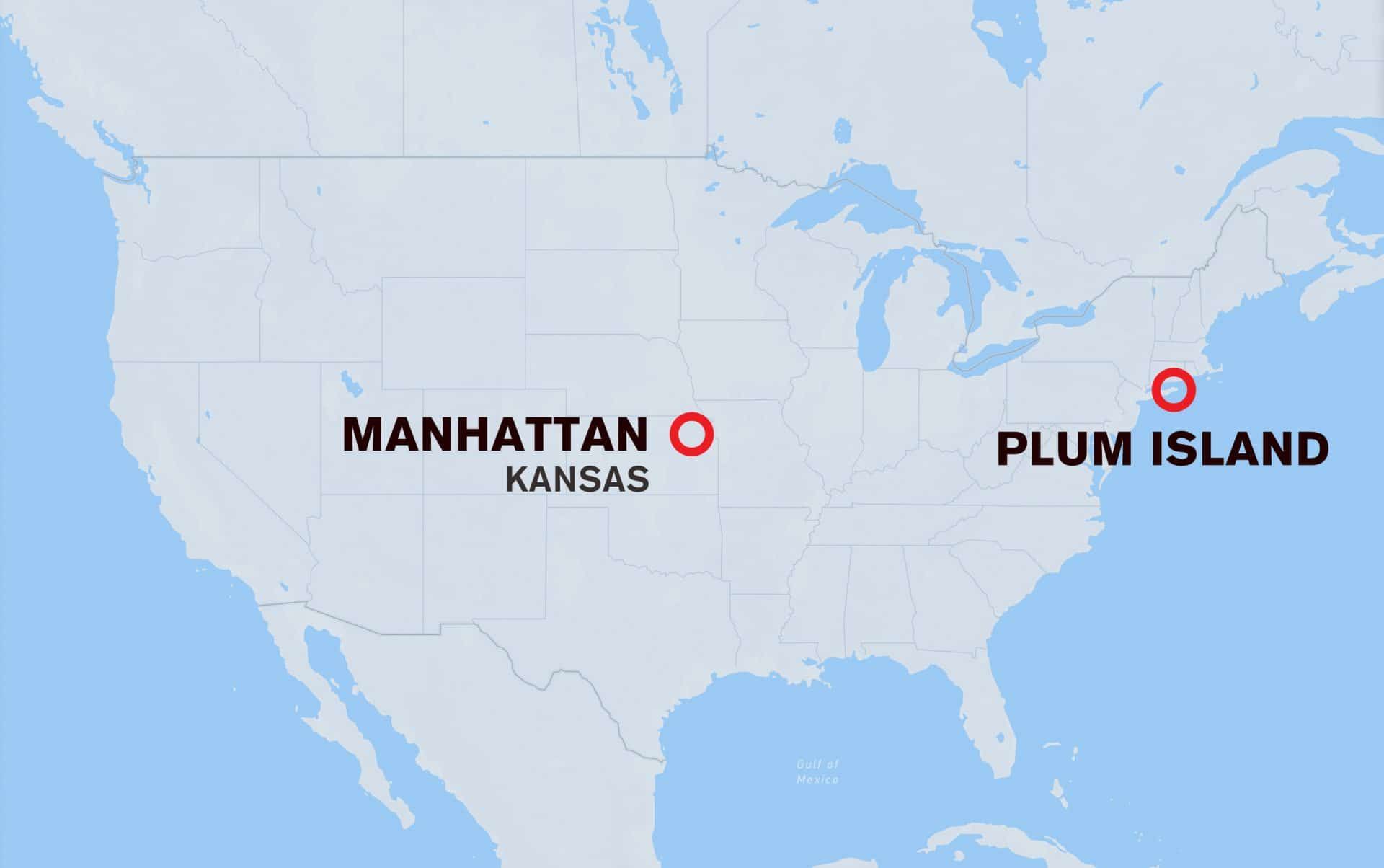
N.B.A.F. is part of a broad expansion in the number of American high-containment labs, which began after the 9/11 terrorist attacks and shows no sign of slowing. The attacks, and the anthrax letters that followed, galvanized spending on biosecurity; the resulting growth in BSL-3 and BSL-4 facilities expanded our research capacities. But the expansion has also created its own risks. No lab is perfect, and even well-run facilities suffer breaches. The new labs are spread out geographically, and no central authority regulates them or monitors their proliferation. The decision to build N.B.A.F. in Manhattan, which is home to Kansas State University, was deeply contentious. Supporters argued that its location at a major agricultural campus could speed its response to new threats. Critics maintained that building an animal-disease lab in such close proximity to ranches and feedlots was reckless and increased the chances of a catastrophic outbreak.
The new coronavirus has plunged us into an infectious-disease crisis with which we are struggling to cope. As we respond, the years-long debate over N.B.A.F. raises worrying questions about American biodefense policy. Will more labs help us fight outbreaks? Or are we building too many labs in too many places? Who, if anyone, is responsible for making sure that labs are well-run—or for saying “stop”?
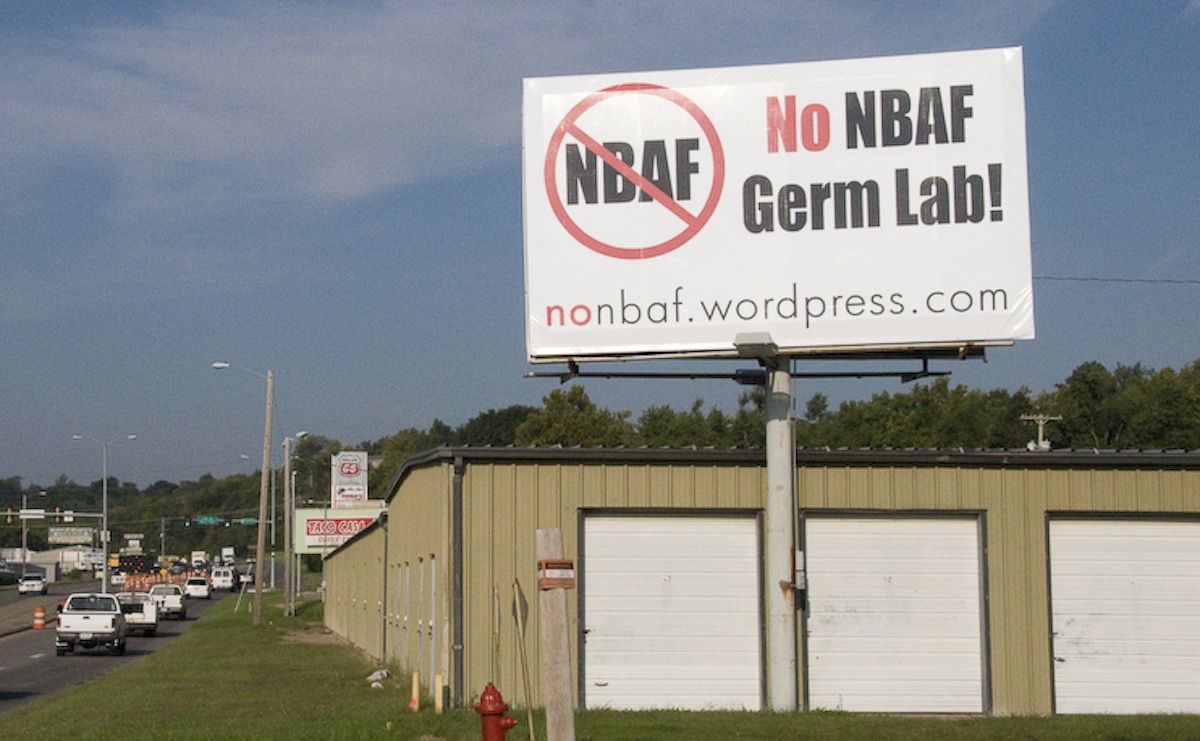
“When some horrific Level 4 pathogen escapes a Manhattan bio lab, all the heartland will weep with remorse.”
— the late Stephen Anderson, Kansas rancher
In September, 2008, a black, red, and white billboard appeared over Highway 18, one of the main thoroughfares leading in and out of Manhattan. In black letters too large to miss, the sign read “No NBAF Germ Lab!” It had been erected by Bart Thomas, a third-generation Manhattanite and the second-generation owner of Thomas Outdoor Signs & Graphics. The year before, Thomas had heard that Kansas State University was in the running to host the replacement for the Plum Island Animal Disease Center. In New York, Senator Hillary Clinton and Representative Timothy Bishop, whose district includes eastern Long Island, were opposing plans to upgrade the current Plum Island lab from BSL-3 to BSL-4. As a result, the Department of Homeland Security (D.H.S.) was searching for other sites.
Thomas read that the proposed BSL-4 lab would handle Japanese encephalitis and the Nipah and Ebola viruses, which have high mortality rates in people. It would also study foot-and-mouth disease and be equipped to handle swine fever and avian flu—diseases capable of wiping out whole pork and poultry operations. Thomas, whose son and grandchildren also live in Manhattan, was mystified and alarmed by the idea that specimens of these diseases might be brought from an isolated island lab to his hometown.
As word of the new lab spread, a small opposition group coalesced—an alliance of neighbors, churchgoers, professors, ranchers, and other concerned citizens. Sylvia Beeman, an artist and former research assistant in the Virology and Agronomy Departments at Kansas State University, circulated a petition opposing the lab. Bill Dorsett, a carpenter and environmental activist, wrote letters to the editors of the Manhattan Mercury and the Topeka Capital-Journal. The group attended public forums held by Kansas State and D.H.S.—sometimes at conspicuously inconvenient times and locations. (One was scheduled in a building surrounded by construction.) At one meeting, Thomas pressed officials about why they thought N.B.A.F. should come to Manhattan. One official explained that, while an accident at Plum Island could affect twenty-nine million people, an accident in northeast Kansas would affect a vastly smaller number.
D.H.S. was weighing “community acceptance” as one of its site-selection criteria; the activists hoped to show that Manhattanites weren’t accepting. Dissent had been effective in other places. In Tracy, California, where Lawrence Livermore National Laboratory had proposed locating the lab, a local grassroots organization helped generate more than seven thousand calls and letters opposing it. A local patent lawyer also spearheaded a successful resistance movement at the University of Wisconsin. By 2008, D.H.S. had winnowed its longlist of possible N.B.A.F. destinations to six finalists. Besides Plum Island—perhaps opposition to an upgrade could be overcome—the other four were Butner, North Carolina (part of the Research Triangle, population 2.2 million); San Antonio, Texas (population 1.5 million); Flora, Mississippi (part of greater Jackson, population 583,080); and Athens, Georgia (population 211,802). Manhattan—a low-rise city of detached homes and historic limestone buildings—was by far the smallest urban area on the list, with fifty-five thousand residents.
Since the late nineteen-nineties, Pat Roberts, the Kansas senator, had been pushing for a biodefense facility in the state; he hoped to transform Manhattan into the “Silicon Valley for biodefense.” In 1999, at Roberts’s urging, three K-State faculty members—Ron Trewyn, a biology professor and dean, and Jerry and Nancy Jaax, medical-defense experts who’d appeared as characters in Richard Preston’s 1994 book “The Hot Zone”—developed a plan for a facility that could study infectious disease in plants, animals, and the food supply. In 2008, a version of their proposed lab opened as a BSL-3 facility called the Biosecurity Research Institute. By then, D.H.S. had begun considering sites for N.B.A.F. Roberts personally appealed to administration officials, hosting them on visits to K-State. He told a joint session of the Kansas state legislature that “securing this facility would be one of, if not the greatest, economic development initiatives in state history.”
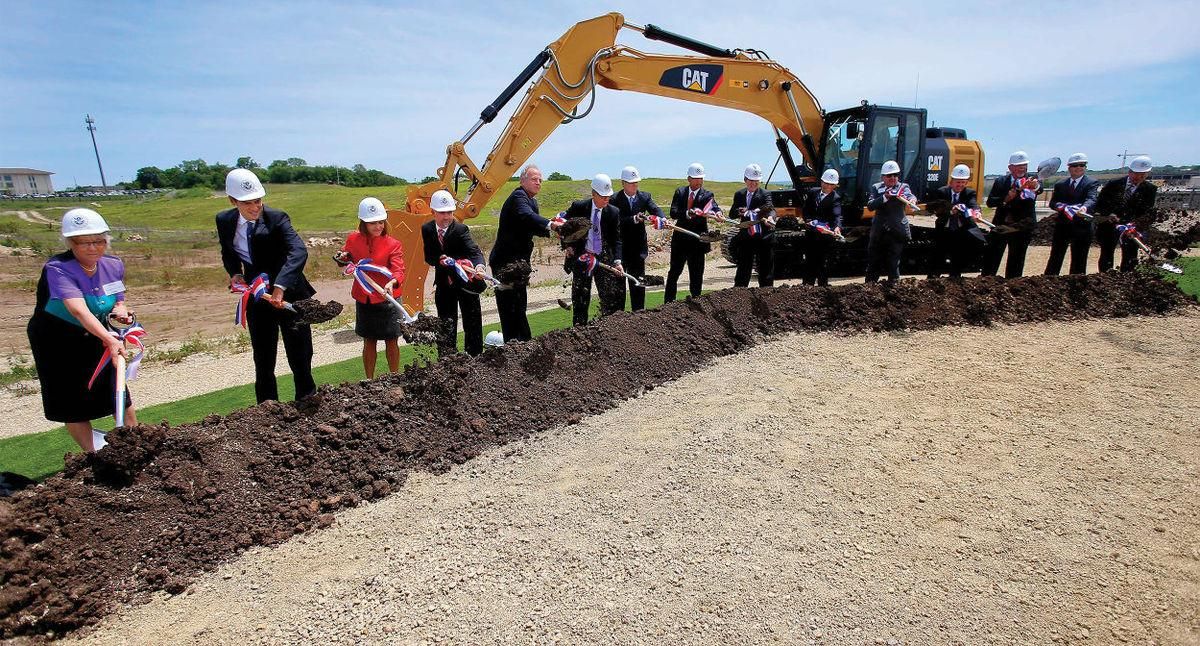
In January, 2009, D.H.S. decided on Manhattan. Before Congress released the necessary funds to D.H.S., however, it required the agency to produce a detailed “site-specific risk assessment,” which would be reviewed by the National Academy of Sciences. In 2010, the Academy’s committee, which consisted of more than a dozen science and policy experts, found that the plan did “not account for the overall risks associated with operating the NBAF and conducting foot and mouth disease virus work in Manhattan, Kansas.” The report concluded that, in a projected fifty-year life span, the probability of a foot-and-mouth outbreak originating from the lab was about seventy per cent. For a time, construction was put on hold. Local people continued to protest. In 2012, Stephen Anderson, a lifelong rancher, spoke at a meeting on the lab. “Jobs, politics, and patronage,” he said, had blinded policymakers. Later, Anderson sent a letter to the editor of the Topeka Capital-Journal. “The committee has decreed all is well,” he wrote. “Yet when some horrific Level 4 pathogen escapes a Manhattan bio lab, all the heartland will weep with remorse.”
70 %
Projected probability of a foot and mouth outbreak over 50 years due to a lab breach at NBAF.
As estimated by the National Academy of Sciences in 2010
70%
Projected probability of a foot and mouth outbreak over 50 years due to a lab breach at NBAF.
As estimated by the National Academy of Sciences in 2010
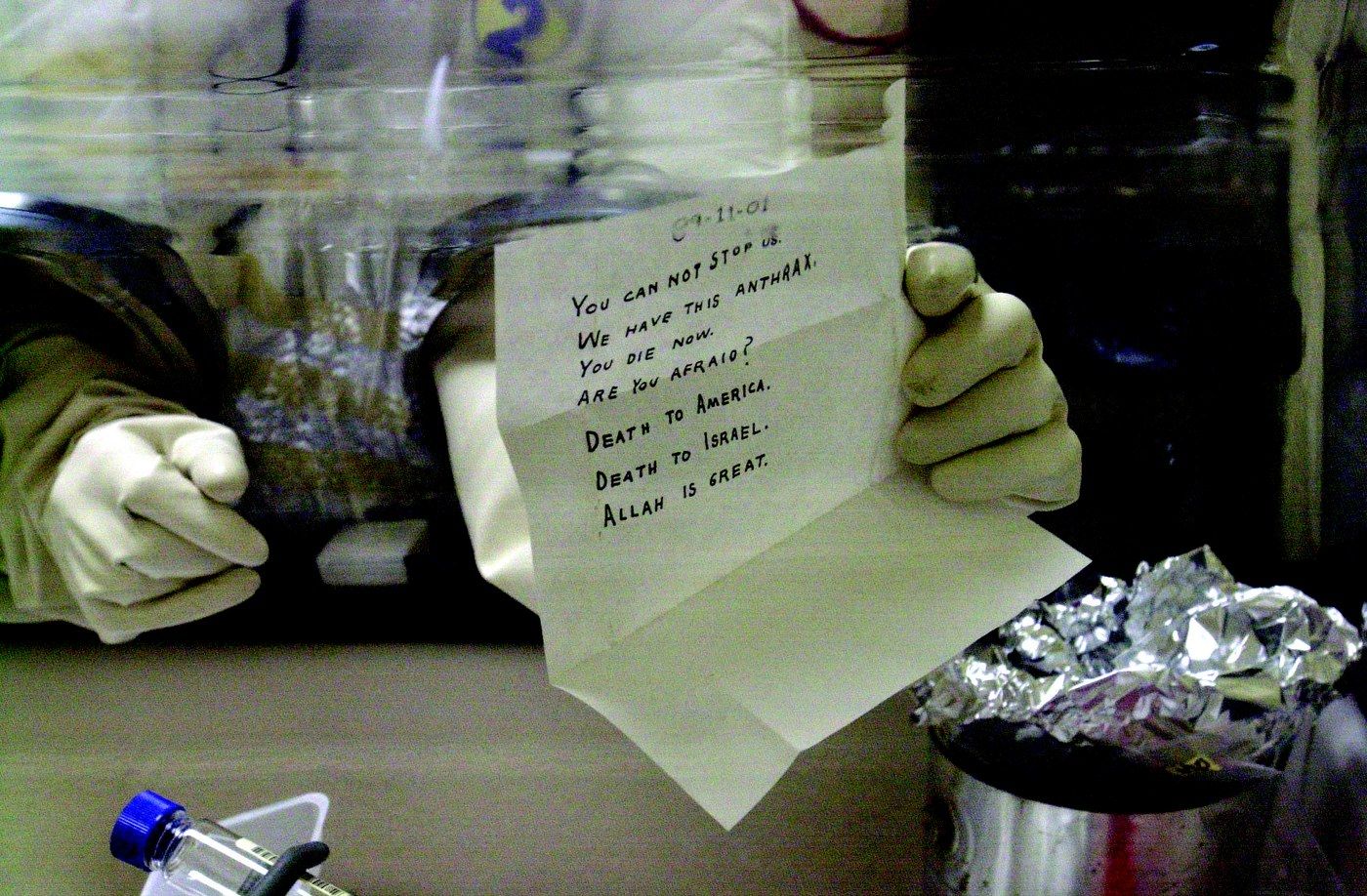
“A more ominous threat than terrorists taking up biology: biologists taking up terrorism.”
— epidemiologist Ali Khan, from “The Next Pandemic”
276
Number of high-containment labs in the United States registered with the Federal Select Agent Program
As of 2017 GAO count
276
Number of high-containment labs in the United States registered with the Federal Select Agent Program
As of 2017 GAO count
In 1346, Mongols catapulted dead plague victims into the Genoese city of Caffa. In 1763, British leaders at Fort Pitt—now Pittsburgh—gave blankets from its smallpox hospital to Native American chiefs. But the modern era of biowarfare didn’t begin until the late nineteenth century, when scientists came to understand that microbes cause disease. Germany launched the first state-run biological-weapons program around 1914; the United States followed, in 1942.
Japan’s biological attacks on China during the nineteen-forties, which by some estimates killed tens of thousands of people, remain history’s most deadly; among other strategies, the Japanese dropped plague-infested fleas from aircraft. After the Second World War, both the United States and the Soviet Union began mastering sophisticated aerosol delivery techniques. Unnerved by the destructive potential of biowarfare, President Richard Nixon terminated the American program in 1969; the Biological Weapons Convention, which banned the development and possession of bioweapons, took effect in 1975. The convention has been brazenly violated, notably by Iraq and the Soviet Union. (In 1979, a Soviet lab in Sverdlovsk accidentally released a puff of anthrax spores into the sky, killing about sixty-four people; had the wind been blowing in the opposite direction, hundreds of thousands could have died.) Yet the convention has also reinforced a widespread sense that bioweapons are wildly dangerous and morally repugnant. Although a few governments and criminals have made low-tech attempts to contaminate water, food, or clothing, there has been no state-on-state biological warfare since the Second World War.
Nevertheless, in the nineteen-nineties, American policymakers began to grow increasingly worried about biowarfare. As the Soviet Union disintegrated, a high-profile defector, Ken Alibek, revealed the elaborate nature of his country’s bioweapons program; proliferation became a concern. The Internet also threatened to make the technology more accessible. In 1999, the Senate Armed Services Committee created a new Subcommittee on Emerging Threats and Capabilities, focussed on countering the proliferation of weapons of mass destruction, including biological weapons. Its chair was Senator Pat Roberts, of Kansas.
In 2001, a week after the 9/11 terrorist attacks, a series of envelopes entered the U.S. postal system, addressed to media companies and politicians. They contained anonymous handwritten notes and a fine dust that turned out to be Bacillus anthracis, the bacteria that causes anthrax. Anthrax spores can travel easily, floating in the air; five of the people who were exposed to the letters died, and seventeen more were hospitalized. The Federal Bureau of Investigation began hunting for the culprit. The letters made reference to 9/11 and contained phrases such as “death to America” and “Allah is great,” and the Central Intelligence Agency and U.S. Army investigated possible ties between the letters and Al Qaeda. They searched the offices of Sultan Bashiruddin Mahmood, a Pakistani nuclear scientist and associate of Osama bin Laden, finding a file of information on anthrax vaccines and a diagram of a balloon intended to release anthrax spores into the atmosphere.
Bioterrorism was now a priority at the highest levels of government. In June, 2002, President George W. Bush signed a bill introducing a slew of new regulations, among them rules about who was allowed to handle a list of “select agents”—dangerous microbes deemed usable as weapons. Between 2001 and 2006, the federal government spent thirty-six billion dollars expanding its biodefense capabilities. As part of those efforts, the Plum Island Animal Disease Center, run by the Department of Agriculture since 1954, was absorbed into the new Department of Homeland Security.
US President George W. Bush signed the Public Health Security and Bioterrorism Response Act at a ceremony in the Rose Garden on June 12, 2002.
Before 1990, there had been only two BSL-4 labs in the United States: one at the Centers for Disease Control and Prevention, in Atlanta, and another at the U.S. Army Medical Research Institute of Infectious Diseases (U.S.A.M.R.I.I.D.), in Fort Detrick, Maryland. In the nineteen-nineties, three were added. In the first seven years after 9/11, the United States opened ten more. In a 2007 report, Keith Rhodes, then the chief technologist in the Government Accountability Office (G.A.O.)—the independent watchdog that conducts research for Congress—observed that there was “a major proliferation of high-containment BSL-3 and BSL-4 labs is taking place in the United States.” Rhodes counted fifteen known American BSL-4 labs (including N.B.A.F.) but suggested that there could be others; the number of BSL-3 labs appeared to have increased even more. “No single federal agency knows how many such labs there are in the United States,” Rhodes wrote, and “no one is responsible for determining the aggregate risks associated with the expansion of these high-containment labs.” In theory, the Federal Select Agent Program keeps tabs, since any lab in possession of a substance on its list has to register; a 2017 report from the G.A.O. counted two hundred and seventy-six high-containment select-agent labs in the United States. But the actual number is almost certainly higher, because not every dangerous pathogen is on the federal list.
In the summer of 2008, at the same time that D.H.S. was choosing a site for N.B.A.F., the F.B.I. announced that it had found the sender of the anthrax letters: Bruce Ivins, a mentally unstable biodefense researcher with high-level security clearances at U.S.A.M.R.I.I.D. Ivins died of an apparent suicide before he could be officially charged; subsequently, journalists have raised questions about some of the evidence against him. All the same, the possibility of Ivins’s involvement raised disturbing questions for those who work in biodefense. “A more ominous threat than terrorists taking up biology,” the epidemiologist Ali Khan wrote, in his 2016 book “The Next Pandemic,” could be “biologists taking up terrorism.”
The British Ministry of Agriculture built funeral pyres for cows, like this one in Great Warley, Essex, during the foot and mouth disease crisis in February 2001. Photo by
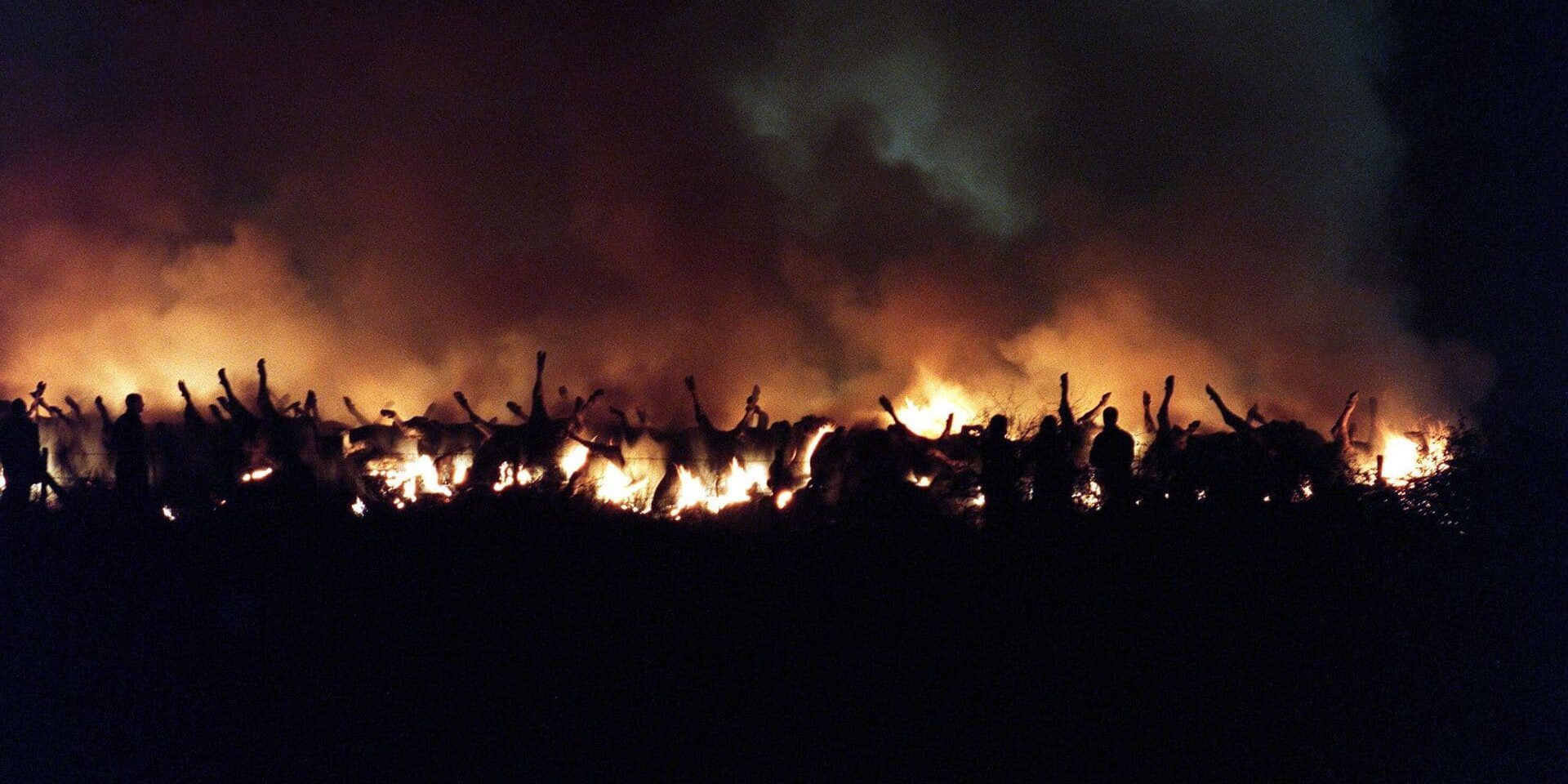
-
Dec 31, 2019
The Inside Threat
A timeline of biodefense lab incidents
-
Dec 31, 2019
-
1979
A Soviet lab in Sverdlovsk accidentally releases a puff of anthrax spores into the sky, killing about sixty-four people; had the wind been blowing in the opposite direction, hundreds of thousands could have died.
-
Dec 31, 2019
-
2001
US biodefense researcher Bruce Ivins mails letters containing anthrax, creating a national panic and spurring legislation on bioterrorism. At the time, the letters are presumed to come from foreign terrorists.
-
Dec 31, 2019
-
2003
A doctoral student at the National University of Singapore tests positive for SARS, acquired through his work in a BSL-3 lab handling the virus.
-
Dec 31, 2019
-
2004
A student at the Beijing Institute for Virology, which is researching SARS, becomes infected with the respiratory disease. She transmits it to a nurse, who in turn gives it to five other people, including her mother, who dies.
-
Dec 31, 2019
-
2006
A scientist at Texas A&M University falls ill, infected with the bacteria Brucella while cleaning equipment after an experiment.
Even as researching pathogens reduces our collective risk, opening new labs increases it.
Manhattan is surrounded by a rolling sea of golden grass—the Flint Hills, North America’s last remaining tallgrass prairie. “No grass anywhere can put weight on cattle more quickly or more economically,” Jim Joy, a historian of ranching, wrote. In the nineteenth century, cattlemen from Texas and elsewhere began driving their herds overland to graze in the Flint Hills. Today, Kansas is at the geographical center of the American beef industry. It is the third-largest cattle-producing state in the country, and its immediate neighbors—Nebraska, Oklahoma, Missouri, and Colorado—are all in the top ten.
During and after the N.B.A.F. site-selection process, many scientists found it baffling that anyone would consider installing a high-containment animal-disease laboratory in the middle of livestock country. “It doesn’t make sense—it’s just insane,” Laura H. Kahn, a physician and research scholar at Princeton University’s Program on Science and Global Security, told me. Abigail Conrad, who was a developmental biologist at K-State when D.H.S. was making its choice, said that the decision “defies reason”; her husband, Gary, also a biologist, called it “beyond ludicrous,” “almost criminal,” and “genuinely stupid.”
Once infected with foot-and-mouth, animals with cloven hooves—cattle, sheep, goats, pigs, deer, bison—come down with fevers and painful blisters. A cow’s milk production can decline. Adult animals can lose weight, and young ones can die. An animal that recovers can still transmit the disease to others. According to the authors of a 2013 paper in the journal Preventive Veterinary Medicine, in countries that are officially foot-and-mouth-free but experience occasional outbreaks, “the costs involved in regaining free status have been enormous.” During the 2001 foot-and-mouth outbreak in England, exclusion zones made travel difficult; tourism from overseas declined by ten per cent. The ultimate cost of containing the outbreak was nearly five billion in today’s dollars. Its source remains undetermined.
In 2007, Britain experienced another, smaller foot-and-mouth outbreak, with only eight confirmed cases. In that instance, investigators were able to trace the infection to the Pirbright Institute, a world-renowned high-containment animal-disease research facility in Surrey. A building at Pirbright had an aging, faulty drainpipe; heavy rains probably washed the live virus from the defective drain out into the open, where truck tires picked it up. According to the G.A.O., one reason to confine foot-and-mouth study to an island is that “there is always some risk of a release from any biocontainment facility.” In fact, for just this reason, foot-and-mouth disease cannot be brought onto the U.S. mainland without the explicit permission of the Secretary of Agriculture.
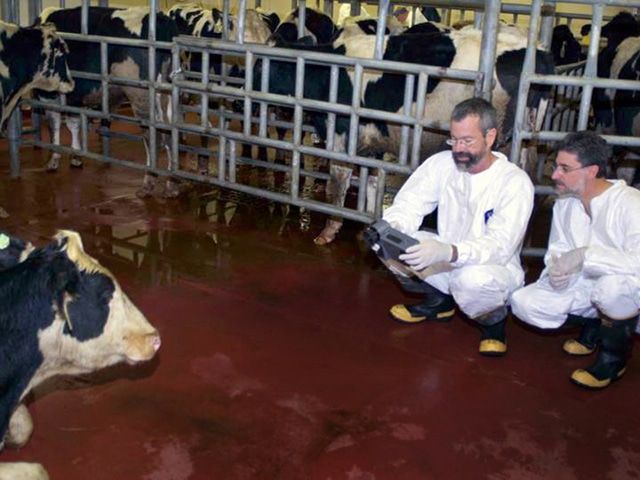
On long enough time scales, mishaps at high-containment labs are probably inevitable. In March, 2004, a post-graduate medical student at the National Institute for Virology in Beijing, which was researching Sudden Acute Respiratory Syndrome (SARS), became infected, transmitting it to a nurse, who in turn gave it to five other people, including her mother, who died. In 2006, a scientist at Texas A&M University fell ill when she was infected with the bacteria Brucella; she’d got it while cleaning equipment. In 2014, workers clearing out a storage room at the National Institutes of Health, in Maryland, found glass tubes containing the smallpox virus, a disease that had been eradicated in 1980. (Scientists believed that all but two stockpiles—one in Siberia, another in Atlanta—had been destroyed.) That same year, the C.D.C. revealed that its employees had accidentally exposed eighty-four workers to live anthrax by sending non-deactivated samples between labs. While investigating that incident, it discovered four additional mishaps from the previous decade.
Military installations make mistakes, too. In 2015, the Defense Department revealed that, in the course of a decade, the Army’s Dugway Proving Ground, in Utah, had sent five hundred and seventy-five shipments of live anthrax bacteria to a hundred and ninety-four labs in the United States and seven other countries. (Workers, charged with using radiation to render the anthrax spores inert before shipping them, hadn’t checked to make sure the procedure had worked.) In a 2015 report, “Biolabs in Your Backyard,” USA Today documented hundreds of safety violations and accidents at high-containment labs, and, in 2014, the Guardian found that British high-security labs had experienced more than a hundred near-misses or accidents in five years.
From reinforced walls to sophisticated air filters, today’s state-of-the-art laboratories are more secure than ever. But no lab is perfect. Even island labs have weaknesses: the isolation that makes them safer also makes them more expensive to build, maintain, and upgrade; they are subject to storms, which can damage infrastructure and prevent employees from showing up for work. In the view of Larry Barrett, the director of the Plum Island Animal Disease Center, water isn’t an insurmountable barrier to disease: a steady enough wind could carry an aerosolized foot-and-mouth virus across a channel.
It’s tempting to see the construction of new labs as a logical response to biological threats. But a dearth of laboratories isn’t necessarily the bottleneck during a crisis. “We were underprepared for community transmission of the new coronavirus, a BSL-3 pathogen, in part because the C.D.C. and F.D.A. had not developed, delivered, and issued approval for public health labs to use appropriate diagnostic tests,” Khan said. “What we’re seeing is not necessarily a lack of labs,” Filippa Lentzos, a senior research fellow on biological threats at King’s College London, told me. The biggest challenges posed by the novel coronavirus, she continued, had to do with contact-tracing and communications—preparing the public, sharing accurate numbers, and battling the spread of misinformation.
There’s no question that the world needs laboratories like N.B.A.F. The question is: How many labs like N.B.A.F. does it need? If a government is worried about fires, it can build more fire stations without increasing the risk of fires breaking out. But high-containment labs are different. Even as researching pathogens reduces our collective risk, opening new labs increases it. In 2016, Lentzos and another biosecurity expert, Gregory Koblentz, of George Mason University, published a paper contending that a dramatic increase in the number of labs and scientists working on dangerous pathogens was adding to our collective risk. They identified a number of potential dangers, including accidental releases, worker infections, theft, and insider threats. (Foreign governments, they suggested, might also interpret the massive expansion in American research, much of it funded by the Department of Defense, as cover for an offensive bioweapons program, sparking a biodefense arms race.)
In their paper, Lentzos and Koblentz discuss the circumstances under which a government should consider not building a new lab. Because labs are expensive to build and maintain, they write, it may be wise to hold off if there’s a chance that funding won’t be sustainable. American biodefense funding is often unpredictable: while Congress has approved a coronavirus-response package of more than eight billion dollars, the White House budget for 2021, released in February, proposes cutting the C.D.C.’s budget by sixteen per cent. (The reductions include a twenty-five-million-dollar cut to the Public Health Preparedness and Response program and an eighteen-million-dollar cut to a Health and Human Services initiative called the Hospital Preparedness Program, which funds regional treatment centers for Ebola and other “special pathogens.”)
Governance is another crucial factor: rules and enforcement mechanisms need to address dual-use research, responsible science, and transparency. “Until all those bits that fall under governance are set up, it’s certainly not right to keep expanding the number of labs,” Lentzos said. In the United States, the governance of high-containment labs is a disorganized endeavor. The National Institutes of Health and the Occupational Health and Safety Administration both exercise some oversight, and the Federal Select Agent Program inspects labs that handle pathogens on its list. Yet it’s easy for labs to fall through the cracks of a list-based regulatory regime. For example, in 2017, researchers in Canada reconstituted the horsepox virus, which, because it is extinct, is not a select agent. Although horsepox can’t infect people, the research also demonstrated how a lab might re-create its cousin, smallpox, which can.
Since its 2007 report, the G.A.O. has released two more reports on the proliferation of high-containment labs. “From a strategic perspective, there is still no overarching strategy for designating BSL-3 and BSL-4 facilities,” Tim Persons, the agency’s current chief scientist, said. In its 2016 report, published under Person’s signature, the G.A.O. wrote that “existing oversight of high-containment laboratories is fragmented” and “relies on self-policing.”
-
2007
Britain’s Pirbright Institute accidentally releases foot-and-mouth virus via a faulty drainpipe, infecting nearby cattle.
-
Dec 31, 2019
-
2014
Workers clearing out a storage room on the campus of the National Institutes of Health, in Maryland, find glass tubes containing smallpox virus, a disease that had been eradicated in 1980.
-
Dec 31, 2019
-
2014
The C.D.C. reveals that its employees accidentally exposed 84 workers to live anthrax by sending non-deactivated samples between labs. While investigating that incident, it discovers four additional mishaps that occurred over the previous decade.
-
Dec 31, 2019
-
2015
The Defense Department reveals that, over the course of a decade, the Army’s Dugway Proving Ground, in Utah, sent 575 shipments of live anthrax bacteria to 194 labs in the United States and seven other countries.
-
Dec 31, 2019

$1.25
billion
Projected cost of construction of the National Bio and Agro-Defense Facility
2008 estimate:
$415 million
$1.25
billion
Projected cost of construction of the National Bio and Agro-Defense Facility
2008 estimate:
$415 million
“Why would you put something like this in America’s breadbasket?”
— Bart Thomas, third-generation Manhattanite
The forty-seven-acre site soon to be occupied by N.B.A.F. is at the north end of the Kansas State campus. It’s about a half mile from the football stadium, which attracts as many as fifty thousand Wildcats fans at game time; it’s also about a thousand feet from the livestock at the university’s Sheep & Meat Goat Center, and the same distance from Meadowlark Hills, a retirement home. It’s directly adjacent to a fifty-eight-unit low-income housing development. It will become fully operational in 2023, at a cost of $1.25 billion (about three times its original projected cost).
Ascension Via Christi, with ninety beds, is Manhattan’s only hospital. Carolyn Koehn, its director of safety and emergency management, said that it wasn’t doing anything specifically to prepare for the possibility of an accidental release at N.B.A.F.: “Because of our already comprehensive plan,” she said, “we feel extremely competent to respond, and we have full trust in their competence.” Via Christi already has infectious-disease specialists on staff, and also an advanced biocontainment unit. David Hogg, the former emergency-management coördinator for the Kansas Department of Agriculture—he now works for the National Agricultural Biosecurity Center, at K-State—told me that the state government has hosted an annual disease-response exercise for the past seven years, often focussed on foot-and-mouth. The exercises have included as many as three hundred and fifty people, representing multiple federal and state agencies. Like Koehn, he is confident that the state is prepared.
N.B.A.F.’s backers have often presented it as a risk-free facility. “This will be the safest lab facility probably ever built,” a policy expert from Governor Sam Brownback’s office told attendees at a public hearing in 2012. That same year, the Manhattan Mercury quoted Lyle Butler, the president of the city’s Chamber of Commerce, claiming that existing BSL-4 facilities “operate without incident.” The political scientist Kennette Benedict, who specializes in science and security policy, has written about “the myth of 100 percent safety,” which makes it easier to sell the public on complex projects but can compromise the ability of planners to judge risks. In a 2014 article for the Bulletin of the Atomic Scientists, Benedict explored how the myth had laid the groundwork for the 2011 Fukushima disaster in Japan:
Nuclear companies and regulators themselves came to accept the myth as reality, believing that they had done everything possible to make their power plants safe. But this myth led to a perverse outcome: If the power companies identified and made necessary improvements, or staged accident-preparedness drills, they would reveal that nuclear power was not absolutely safe, and the public, they believed, would end its support for nuclear power. Fearing a lack of acceptance, nuclear operators were reluctant to undertake safety upgrades, and even concealed problems.
After the National Academy of Sciences criticized the Department of Homeland Security’s N.B.A.F. risk assessment, in 2010, D.H.S. prepared an updated report. Where the Academy had suggested that the likelihood of a foot-and-mouth release at N.B.A.F. would be as high as seventy per cent, the revised D.H.S. report argued that the likelihood was dramatically lower: only one-tenth of one per cent. The Academy’s committee found the drop suspiciously extreme; in a rebuttal, they criticized the update’s “overly optimistic and unsupported estimates of human error rates, underestimates of infectious material available for release, and inappropriate treatment of dependencies, uncertainties, and sensitivities in calculating release probabilities.” They concluded that “the vanishingly small estimates of risk” proposed by D.H.S. were “inconsistent with most modern, complex industrial systems.” But the National Academy’s evaluation had no binding force. Construction began in 2013.
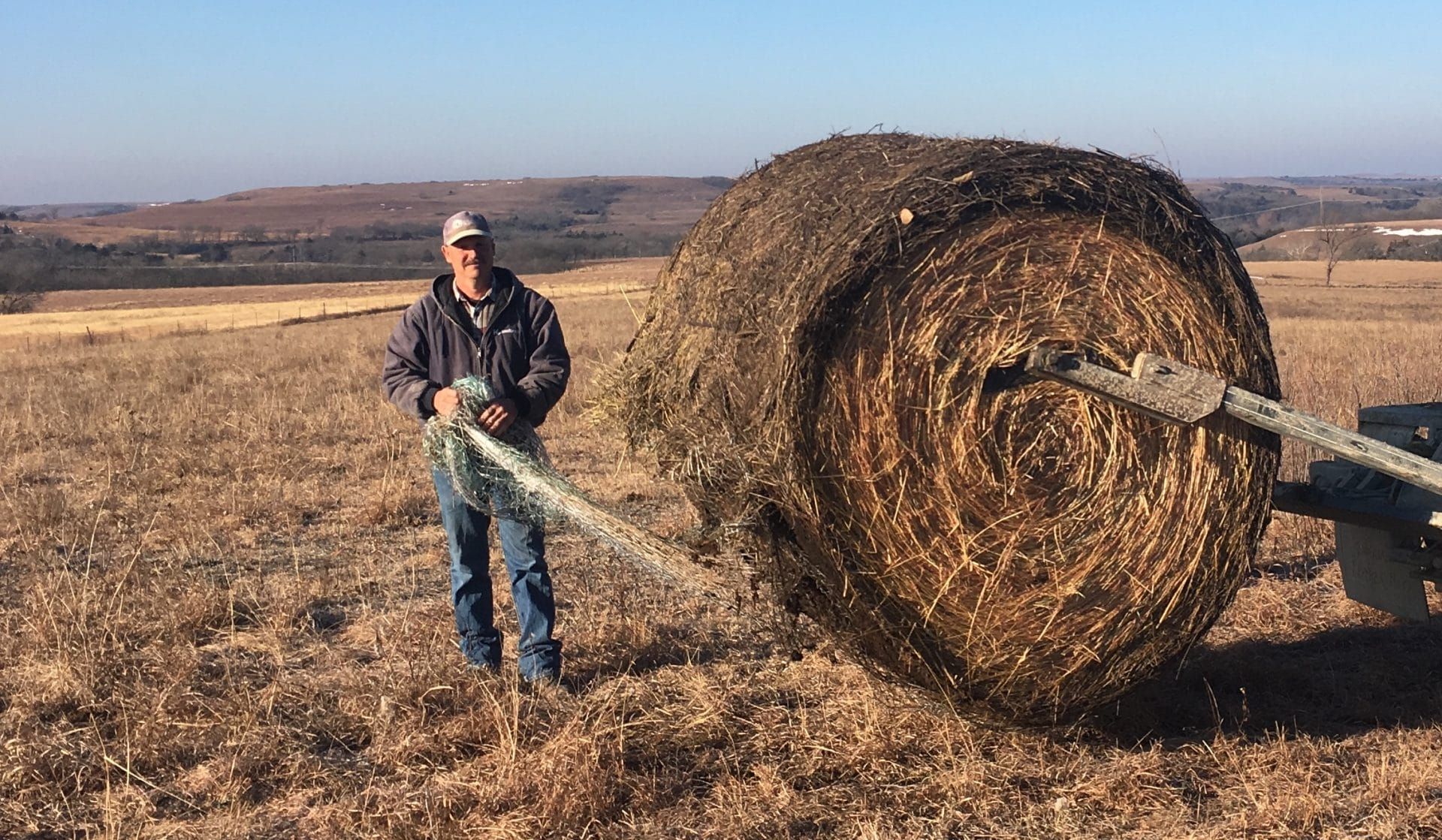
Over time, even risks once seen as extraordinary can come to seem ordinary. On a sunny, freezing morning last winter, Matt Anderson, Stephen’s son, climbed into the cab of his mud-caked gray pickup, which is modified to unspool large rolls of hay from the back. With his wife, Julia, and their son and daughter-in-law, Anderson now manages the family ranch outside of Alma, Kansas, twenty-five miles southeast of Manhattan. The Andersons run a “cow-calf” operation: they raise roughly five hundred head of Angus cattle from birth until the calves are one or two years old, then sell them on at auctions. Their cattle end up at feedlots around western Kansas, Iowa, and Nebraska, where up to fifty thousand animals are gathered in a single location—ideal conditions for contagion. Whereas his father, who died a few years ago, protested the lab vociferously, Matt spends most of his time thinking about breeding, fence-building, calving, pricing, and the rest of his business. “I’m just spending all my time managing what I’m doing,” he said as he drove. Many ranchers around the country worry about foot-and-mouth coming from imported beef. Matt now assumes that he will have to worry about it coming from a lab, too.
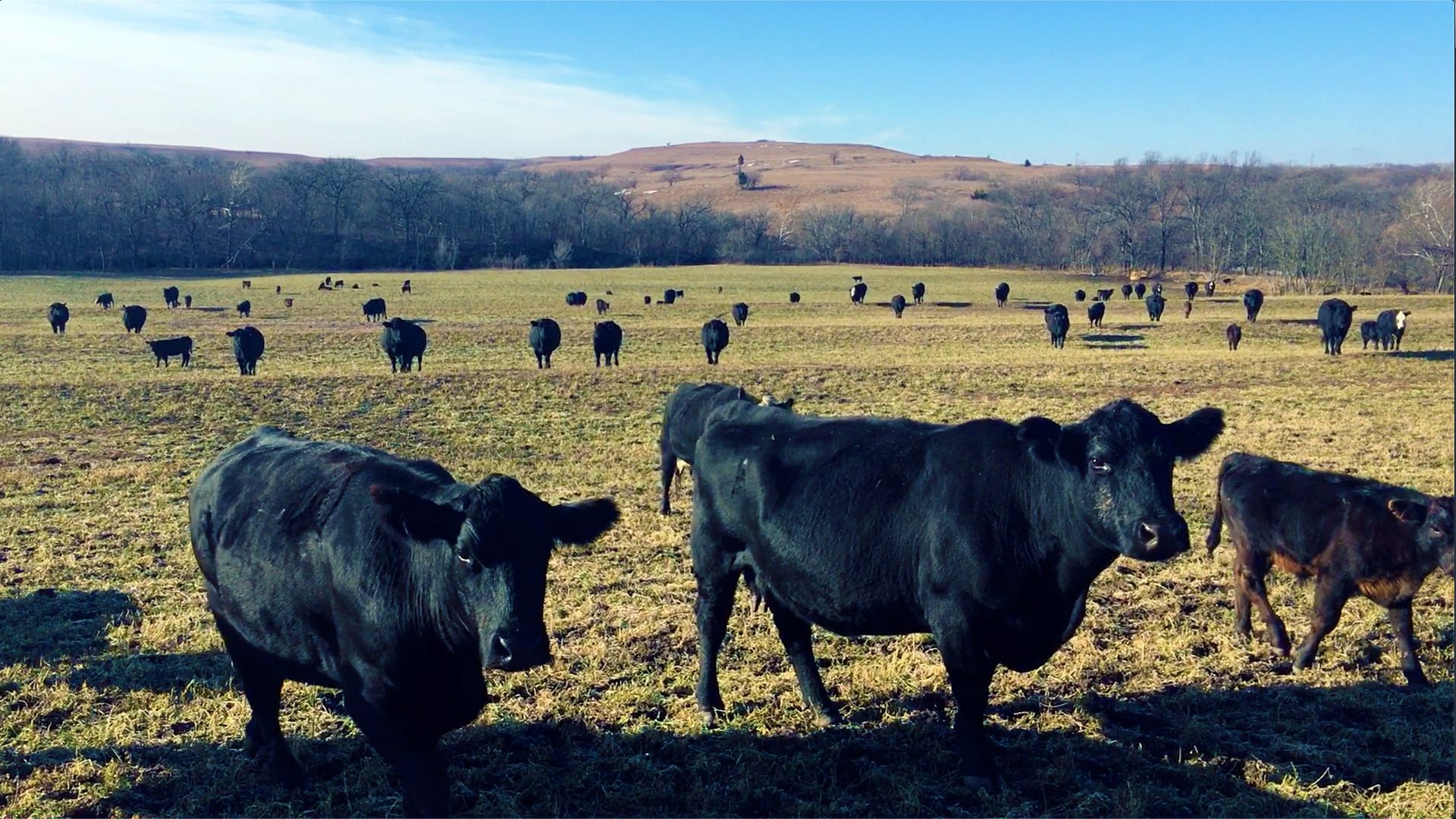
Kimberly Dodd expects to move to Kansas sometime between 2021 and 2023. She is looking forward to the expanded scale and scope of her work: bigger facilities, more training programs, a staff twice the size. She’s also excited to work on BSL-4 agents again: zoonotic diseases that can jump from animals to humans, such as Nipah virus, Crimean-Congo hemorrhagic fever, and Ebola. When she visits Manhattan, she flies to Kansas City and drives west for two hours on Highway 70, often with colleagues from New York who may be dubious about their new surroundings. “I keep saying, ‘Wait for it, wait for it,’ ” she told me. “Then you get a little bit further and you start to have some hills. And then you hit the Flint Hills in the late afternoon, with the light changing. It’s beautiful.”
The Kansas protesters have accepted their inability to divert the juggernaut of political and economic interests that favor N.B.A.F. In 2019, the billboard above Highway 18 that once declared “No NBAF Germ Lab!” displayed an ad for the Parkwood Inn & Suites, touting its location, just ten blocks from Kansas State.
“When that thing opens up, we’re gonna leave and stay elsewhere for hopefully three to four months out of the year, so we’ll cut our odds,” Bart Thomas, the sign-company owner, told me, in his office. Later, I met with Sylvia Beeman, the former research assistant, and Bill Dorsett, the carpenter, at Sparrow, a coffee shop across the street from campus.
“I feel so guilty,” Beeman said. “I dropped the ball.”
“We did good work,” Dorsett said. “We were up against just too big a stone that was rolling in the other direction.”
“Kansans are really, really nice,” she said. “They don’t like to make waves.”
